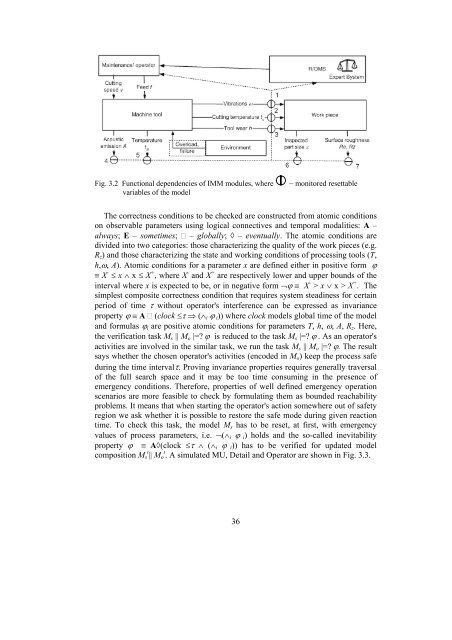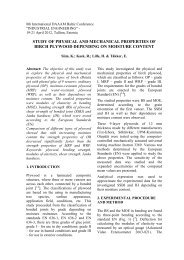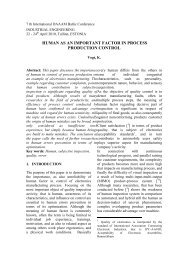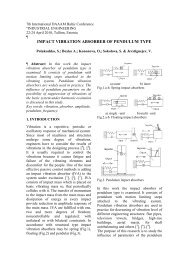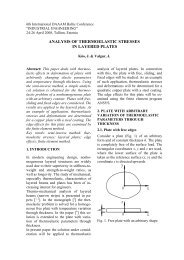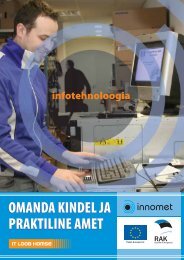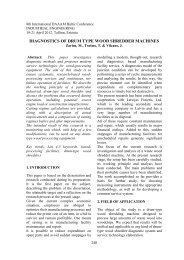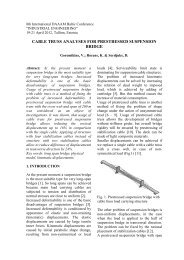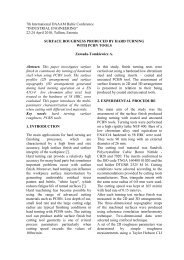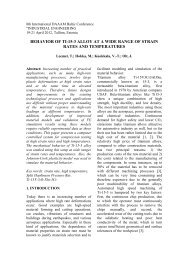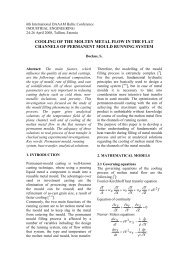Overview in PDF format - Tallinna Tehnikaülikool
Overview in PDF format - Tallinna Tehnikaülikool
Overview in PDF format - Tallinna Tehnikaülikool
Create successful ePaper yourself
Turn your PDF publications into a flip-book with our unique Google optimized e-Paper software.
Fig. 3.2 Functional dependencies of IMM modules, wherevariables of the model– monitored resettableThe correctness conditions to be checked are constructed from atomic conditionson observable parameters us<strong>in</strong>g logical connectives and temporal modalities: A –always; E – sometimes; – globally; ◊ – eventually. The atomic conditions aredivided <strong>in</strong>to two categories: those characteriz<strong>in</strong>g the quality of the work pieces (e.g.R z ) and those characteriz<strong>in</strong>g the state and work<strong>in</strong>g conditions of process<strong>in</strong>g tools (T,h,ω, A). Atomic conditions for a parameter x are def<strong>in</strong>ed either <strong>in</strong> positive form ϕ≡ X - ≤ x ∧ x ≤ X + , where X - and X + are respectively lower and upper bounds of the<strong>in</strong>terval where x is expected to be, or <strong>in</strong> negative form ¬ϕ ≡ X - > x ∨ x > X + . Thesimplest composite correctness condition that requires system stead<strong>in</strong>ess for certa<strong>in</strong>period of time τ without operator's <strong>in</strong>terference can be expressed as <strong>in</strong>varianceproperty ϕ ≡ A (clock ≤τ ⇒ (∧ i ϕ i)) where clock models global time of the modeland formulas ϕ i are positive atomic conditions for parameters T, h, ω, A, R z . Here,the verification task M s || M o |=? ϕ is reduced to the task M s |=? ϕ . As an operator'sactivities are <strong>in</strong>volved <strong>in</strong> the similar task, we run the task M s || M o |=? ϕ. The resultsays whether the chosen operator's activities (encoded <strong>in</strong> M o ) keep the process safedur<strong>in</strong>g the time <strong>in</strong>tervalτ. Prov<strong>in</strong>g <strong>in</strong>variance properties requires generally traversalof the full search space and it may be too time consum<strong>in</strong>g <strong>in</strong> the presence ofemergency conditions. Therefore, properties of well def<strong>in</strong>ed emergency operationscenarios are more feasible to check by formulat<strong>in</strong>g them as bounded reachabilityproblems. It means that when start<strong>in</strong>g the operator's action somewhere out of safetyregion we ask whether it is possible to restore the safe mode dur<strong>in</strong>g given reactiontime. To check this task, the model M s has to be reset, at first, with emergencyvalues of process parameters, i.e. ¬(∧ i ϕ i) holds and the so-called <strong>in</strong>evitabilityproperty ϕ ≡ A◊(clock ≤τ ∧ (∧ i ϕ i)) has to be verified for updated modelcomposition M t s || M t o . A simulated MU, Detail and Operator are shown <strong>in</strong> Fig. 3.3.36


